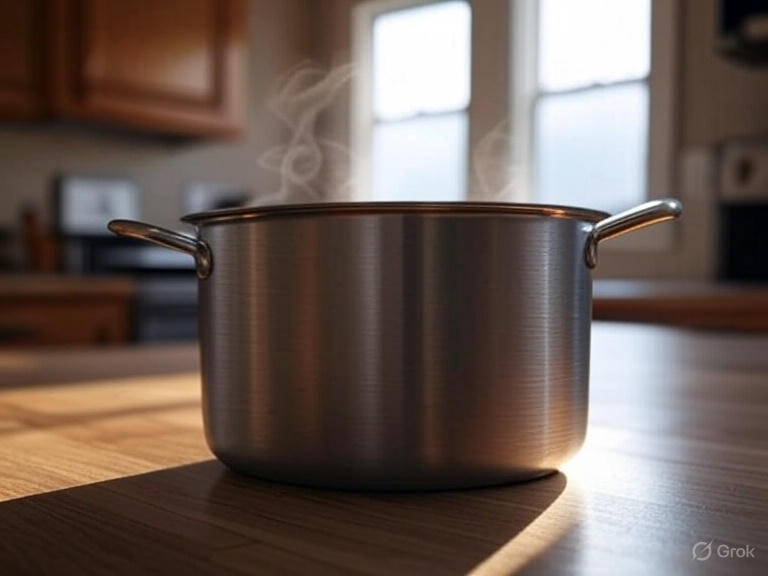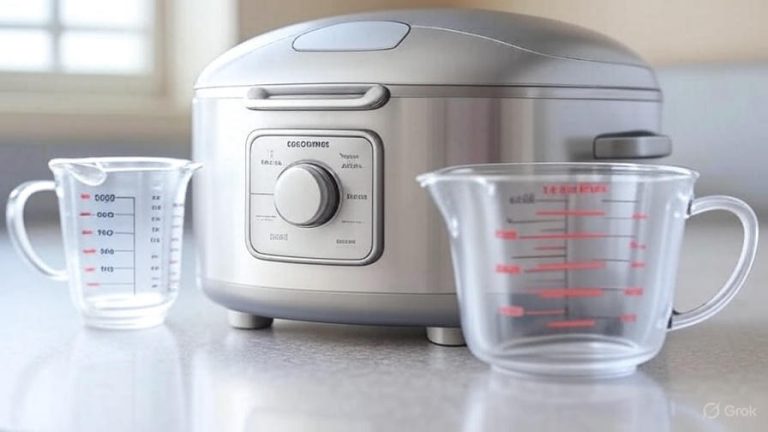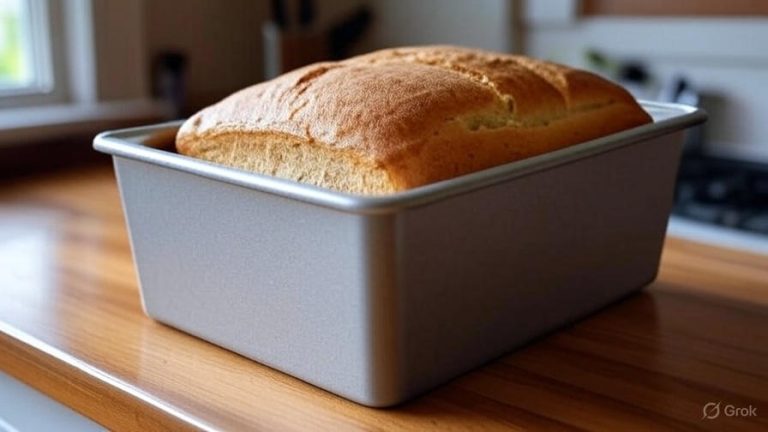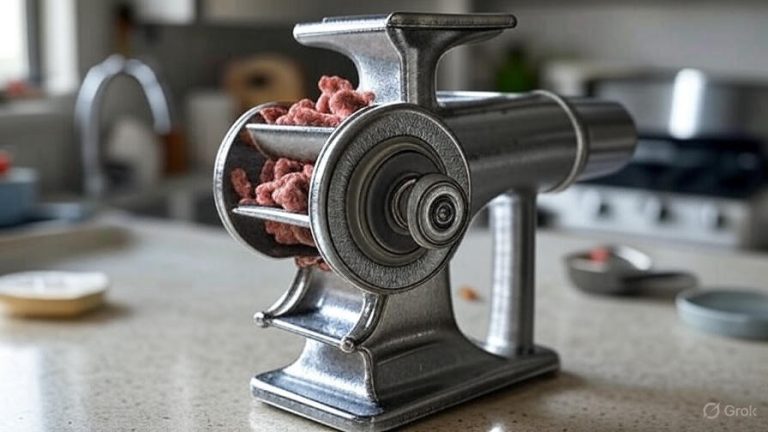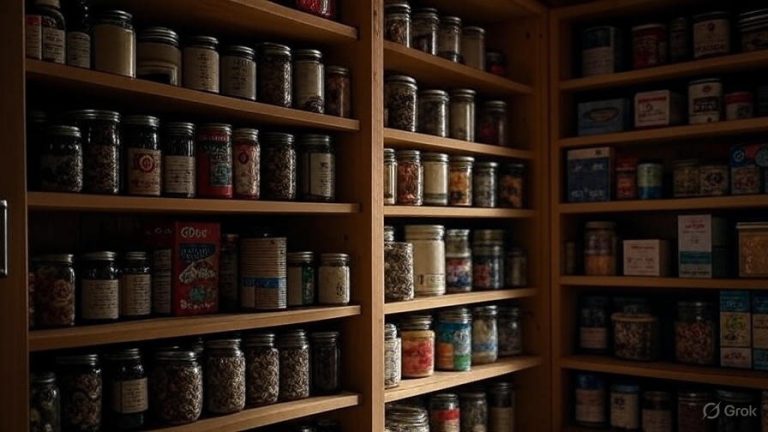How Big is a 0.5 Quart Pot?
Choosing the right pot size can make or break your cooking experience. Many home cooks struggle with understanding cookware measurements, especially when dealing with smaller vessels like a 0.5 quart pot. This compact cooking tool might seem tiny, but it serves specific purposes that larger pots simply cannot match.
Understanding pot sizes helps you cook more efficiently and select the right equipment for your kitchen needs. Whether you’re preparing individual portions, making sauces, or working with limited stovetop space, knowing exactly how big a half-quart pot is will guide your purchasing decisions.
Understanding Quart Measurements in Cookware
A quart equals 32 fluid ounces or approximately 946 milliliters. When manufacturers label pots with quart measurements, they refer to the total liquid capacity the pot can hold when filled to the brim. However, practical cooking capacity usually runs about 20-25% less than the maximum capacity to prevent spillovers.
A 0.5 quart pot holds exactly 16 fluid ounces or about 473 milliliters of liquid. This measurement translates to 2 cups of liquid capacity, making it perfect for small-batch cooking tasks. The actual cooking volume you’ll work with typically ranges from 12-14 fluid ounces to allow for stirring and bubbling.
Most cookware manufacturers use standardized measurements, but slight variations exist between brands. Some companies measure capacity differently, leading to minor discrepancies in actual size. Always check the specific dimensions if precise capacity matters for your cooking needs.
Physical Dimensions of a Half-Quart Pot
The typical 0.5 quart pot measures approximately 4 to 5 inches in diameter at the top. The depth usually ranges from 2.5 to 3.5 inches, depending on the manufacturer’s design philosophy. These dimensions create a compact vessel that fits comfortably on small burners while providing adequate cooking space.
Different pot shapes affect the overall dimensions even with identical capacities. A wider, shallower pot offers more surface area for sautéing and reducing liquids. Conversely, a narrower, deeper design works better for melting chocolate or warming small quantities of liquid.
The bottom diameter typically measures 3 to 4 inches, creating stability on standard stovetop burners. Most half-quart pots feature straight or slightly flared sides that maximize the cooking surface while maintaining the compact footprint. Handle length varies significantly between manufacturers, usually extending 4 to 6 inches from the pot body.
Comparing Pot Sizes: Where Half-Quart Fits
Understanding how a 0.5 quart pot compares to other common sizes helps put its capacity in perspective. A standard coffee mug holds about 8-12 ounces, making the half-quart pot roughly equivalent to 1.5 coffee mugs. This comparison helps visualize the actual cooking capacity you’re working with.
Compared to a 1-quart saucepan, the half-quart version is exactly half the size. Most home cooks find 1-quart pots useful for small families, making the 0.5 quart ideal for single-serving portions or specialized cooking tasks. The size difference becomes apparent when you need to melt butter, warm milk, or prepare individual sauce portions.
A 2-quart pot, common in most kitchen sets, holds four times more than a half-quart pot. This dramatic size difference illustrates why smaller pots excel at precision cooking tasks. You wouldn’t want to melt 2 tablespoons of butter in a 2-quart pot, just as you couldn’t prepare soup for four people in a half-quart vessel.
Practical Uses for a 0.5 Quart Pot
Half-quart pots excel at melting tasks that require gentle, controlled heat. Melting chocolate for baking projects becomes much easier in a small pot where you can monitor the process closely. The limited capacity prevents overheating while providing enough space for stirring without waste.
Warming milk for coffee drinks or hot chocolate works perfectly in this size pot. You can heat exactly the amount needed without waste, and the small surface area reduces the risk of scorching. Many baristas prefer small pots for steaming milk because they offer better temperature control than larger vessels.
Preparing individual sauce portions represents another ideal use case. Whether you’re making hollandaise for one person or reducing wine for a single serving, the compact size ensures efficient heat distribution. The small capacity also makes it easier to achieve proper consistency without excessive reduction time.
Single-serving reheating tasks work wonderfully in half-quart pots. Leftover soup, gravy, or sauce portions reheat quickly and evenly without the risk of burning that comes with larger pots. The size also makes portion control easier when serving individual meals.
Material and Construction Considerations
Stainless steel half-quart pots offer durability and even heat distribution. The material doesn’t react with acidic ingredients, making it suitable for wine reductions and citrus-based sauces. Stainless steel also maintains its appearance well and works with induction cooktops.
Aluminum construction provides excellent heat conductivity at a lower price point. However, uncoated aluminum can react with acidic foods, potentially affecting flavor. Hard-anodized aluminum versions eliminate this concern while maintaining superior heat transfer properties.
Copper half-quart pots deliver exceptional temperature control but require more maintenance. Professional chefs often prefer copper for delicate tasks like making caramel or tempering chocolate. The material’s responsiveness to heat changes makes it ideal for precision cooking applications.
Non-stick coatings work well in small pots, especially for tasks involving sticky ingredients like caramel or cheese sauces. However, the coating limits the maximum safe temperature and requires careful handling to prevent damage. Consider your primary uses before choosing coated options.
Heat Distribution and Cooking Performance
Smaller pots generally heat more quickly than larger ones, but they also cool faster when removed from heat. This characteristic makes half-quart pots excellent for tasks requiring rapid temperature changes. You can quickly bring liquids to temperature and just as quickly stop the cooking process.
The compact size creates more concentrated heat distribution, which can be both beneficial and challenging. Benefits include faster heating times and more efficient energy use. Challenges arise when ingredients require gentle, gradual heating, as the intense heat concentration can cause scorching.
Bottom thickness plays a crucial role in heat distribution quality. Thicker bottoms provide more even heating but take longer to respond to temperature changes. Thinner bottoms heat quickly but may create hot spots that cause uneven cooking results.
Storage and Space Considerations
Half-quart pots require minimal storage space, making them ideal for small kitchens or RV cooking setups. They nest easily inside larger pots, maximizing cabinet efficiency. Many cooks appreciate having a dedicated small pot that doesn’t take up valuable storage real estate.
The compact size makes these pots perfect for camping or outdoor cooking where space and weight matter. A half-quart pot can handle most individual cooking needs while packing efficiently with other camping gear. The small size also means faster cleanup when washing facilities are limited.
In professional kitchens, half-quart pots often serve as specialty tools rather than primary cooking vessels. Chefs use them for sauce work, chocolate tempering, and other precision tasks where larger pots would be inefficient. The small size allows for better control and reduced waste in commercial settings.
Choosing the Right Half-Quart Pot
Handle design significantly impacts usability in small pots. Long handles provide better leverage but take up more storage space. Short handles offer compact storage but may become hot during extended cooking. Consider your primary uses and storage constraints when evaluating handle options.
Lid availability enhances versatility but isn’t always necessary for typical half-quart pot applications. Lids help retain heat and prevent splattering, which can be useful for certain cooking methods. However, many tasks performed in small pots don’t require lid coverage.
Pour spouts or pouring lips make transferring liquids easier from small pots. These features prove especially valuable when working with hot liquids or when precision pouring matters. Some manufacturers integrate measurement markers inside the pot for added convenience.
Maintenance and Care Tips
Small pots require the same basic care as larger cookware but benefit from gentle handling due to their size. Avoid extreme temperature changes that could warp the metal. Allow the pot to cool gradually before washing, especially with thinner-bottomed models.
Hand washing often works better than dishwasher cleaning for small pots. The compact size makes manual cleaning quick and easy while ensuring thorough removal of food residues. Some automatic dishwasher cycles may not effectively clean small items due to water circulation patterns.
Proper storage prevents scratching and maintains the pot’s appearance. Use pot protectors or soft cloths between nested cookware to prevent surface damage. Store lids separately if possible to avoid scratching the pot’s interior surface.
Cost Considerations and Value
Half-quart pots typically cost less than larger sizes due to reduced material requirements. However, the price per quart of capacity often runs higher than larger pots. Consider the specialized nature of these tools when evaluating cost-effectiveness for your specific needs.
Quality construction becomes even more important in small pots because defects are more noticeable. Thin spots, uneven bottoms, or poor handle attachment affect performance more dramatically in compact vessels. Investing in quality construction pays dividends in cooking performance and longevity.
Many cookware sets include multiple pot sizes but may skip the half-quart option. Purchasing individually allows you to select the exact specifications you need without paying for unnecessary pieces. This approach often results in better quality tools tailored to your cooking style.
Conclusion: Making the Most of Your Half-Quart Pot
A 0.5 quart pot measures approximately 4-5 inches in diameter and 2.5-3.5 inches deep, holding 16 fluid ounces or 2 cups of liquid. This compact size makes it invaluable for precision cooking tasks, individual portions, and specialized applications where larger pots prove inefficient.
The key to maximizing value from a half-quart pot lies in understanding its strengths and limitations. These tools excel at controlled heating tasks, small-batch preparations, and situations where waste reduction matters. They work less well for tasks requiring large volumes or extended cooking times.
Whether you’re a home cook looking to expand your kitchen capabilities or a professional seeking specialized tools, a half-quart pot fills a unique niche in cookware collections. Its compact size, efficient heating, and versatile applications make it a worthwhile addition to most kitchens.
Consider your cooking habits, available storage space, and budget when deciding whether a half-quart pot belongs in your kitchen. For many cooks, this small but mighty tool becomes an indispensable part of their culinary arsenal, proving that sometimes the smallest tools make the biggest difference in cooking success.

